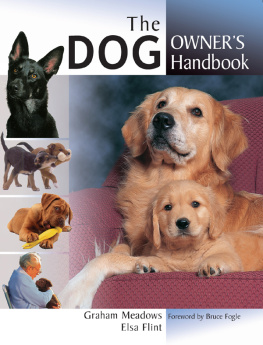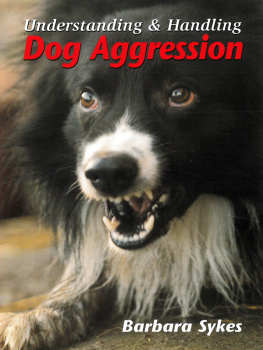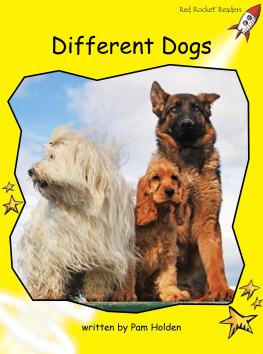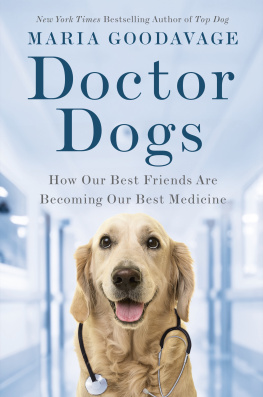Contents
Guide
THE DOG
OWNERS
HANDBOOK |

|

THE DOG
OWNERS
HANDBOOK | 
|
Graham Meadows and Elsa Flint Foreword by Bruce Fogle |

First published in 2001 by
New Holland (Publishers) Ltd
London Cape Town Sydney Auckland
New Holland Publishers (UK) Ltd
Garfield House, 86 Edgware Road
London, W2 2EA
80 McKenzie Street
Cape Town 8001
South Africa
3/2 Aquatic Drive
Frenchs Forest, NSW 2086
Australia
218 Lake Road
Northcote, Auckland
New Zealand
Copyright 2001 New Holland Publishers (UK) Ltd
Copyright 2001 in text: Graham Meadows and Elsa Flint
Copyright 2001 in illustrations: New Holland Publishers (UK) Ltd
eISBN: 978-1-60765-381-3
All rights reserved. No part of this publication may be reproduced, stored in a retrieval system or transmitted, in any form or by any means, electronic, mechanical, photocopying, recording or otherwise, without the prior written permission of the publishers and copyright holders.
Publisher: Marille Renssen
Managing Editors: Claudia Dos Santos (SA), Mari Roberts (UK)
Managing Art Editor: Peter Bosman
Editor: Gail Jennings
Design and Illustration: Steven Felmore
Picture Researcher: Sonya Meyer
Proofreader and Indexer: Sean Fraser
Production: Myrna Collins
Consultant (UK): Bas Hagreis
Reproduction by Disc Express (Cape) Pty Ltd
Printed and bound in Singapore by Tien Wah Press (Pte) Ltd
Authors acknowledgements
Putting this book together highlighted the value of the Internet for the rapid communication of words, comments and images across the world.
But despite these advances in communication, this publishing effort still required the usual amount of expertise, time and teamwork. Therefore we would like to record our sincere thanks to the following members of the publishing team in Cape Town: Claudia Dos Santos, who skillfully coordinated the project; Gail Jennings, who proved a patient and understanding editor; Steven Felmore, whose design contributed so much to the way the information was presented; and Sonya Meyer, who tackled the not particularly easy task of coordinating the picture research.
We would also like to acknowledge all the other people, whose names are unknown to us, who played a part in bringing this book to publication.
Although the authors and publishers have made every effort to ensure that the information contained in this book was correct at the time of going to press, they accept no responsibility for any loss, injury or inconvenience sustained by any person using this book.
The German Shepherd Dog is particularly intelligent and has highly developed senses, which makes it easy to train.
The Golden Cocker Spaniel is a strong, independent breed, and usually cannot tolerate being teased by children.
The Golden Retriever is an excellent swimmer, and in the 19th century used to work as crew on Newfoundland fishing boats, helping to bring heavy nets to shore.


There are many different dog breeds, each with particular characteristics, traits and even aptitudes. It is the duty of all pet owners to choose a dog that will fit in with their lifestyle and the environment they are able to provide for it. Large breeds, such as those depicted above, require much space, as well as training and regular daily exercise.
CONTENTS

Generally, Labrador Retrievers have a calm disposition and are intelligent, hard working and reliable. These positive qualities make them eminently suitable for training as guide dogs for the blind.
FOREWORD
The essence of dog-ownership

D ogs are not changing we are. Not so long ago a dog was considered part of the furniture. Today it is an active part of the family, a best buddy, a listening friend and a helping paw.
From the time canines first entered human homes, emotion played a role in our alliance with them. My observation during 30 years as a practising veterinarian is that emotional ties play an increasingly prominent role as our relationships with pet dogs are becoming progressively complex. And frequently we get all it wrong. Let me explain.
I accept that dogs and people share similar emotions. Elation, fear, tranquillity, anxiety, contentment, anger and even love are feelings that dogs share with us.
But your dog does not understand everything you say. It recognises a selection of words, and can determine your mood from the inflection in your voice. Dogs can read your body language, but they are unable to understand language as we do. Since we treat our dogs like members of the family, we tend to think of them as human and treat them accordingly. But we often expect too much of them.
We should never expect them to do more than their evolutionary status as highly sociable pack animals permits.
Emotion also plays a significant role in a relatively new area of veterinary care: geriatrics. This, together with medical genetics, is the burgeoning growth area in veterinary medicine. Pharmaceutical companies have discovered a vigorous demand for medicines that control age-related behaviour disorders such as disorientation, joint pain and incontinence. Food manufacturers formulate diets that ease the strain on the kidneys or hearts of the elderly. Due to our increased emotional investment in them, we want our dogs to live as long as possible, and advances in geriatric medicine mean that vets can now prolong the lives of pets.
Understanding where dogs have come from, their natural behaviour and our relationship with them all form the basis for what comes next: living with us. Whatever the relationship, our dogs depend on us for good nutrition, proper training, disease prevention and physical and emotional care. Read and learn. I hope you get as much pleasure from your canine companion as my family and I have had from all of ours.
Cordially,
Bruce Fogle

























